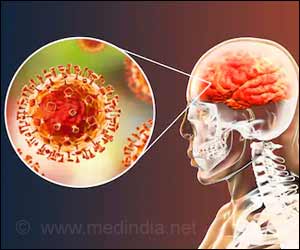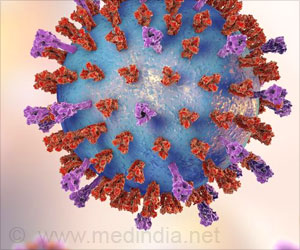
‘This observation has implications for vaccination and not just against Nipah but potentially against influenza, HIV, and other enveloped viruses.
’
Tweet it Now
Nipah is an example of an "enveloped" virus, which gets its outer wrapping from the infected host cell, much like the viruses that cause influenza, rabies, measles and AIDS. Nipah can cause severe diseases and fatal brain swelling in both humans and animals. Yearly outbreaks in Southeast Asia kill 40 to 90 percent of those infected. In 2018, only two out of 19 people infected by Nipah in India survived an outbreak.
Nipah virus has three structural proteins: a matrix protein that provides structure, and two envelope proteins that enable the virus to attach and fuse with host cells. Scientists have believed that matrix proteins "recruit" envelope proteins, sending out some sort of signal so they can all join together on the cell membrane and become a functional virus. Researchers have tried to identify this signal in hopes of finding ways to disrupt the process.
However, Chou and his team observed that envelope proteins tend to be scattered randomly on the cell membrane. They now believe these proteins are picked up purely by chance when they are incorporated into a virus. This produces virus particles more quickly than previously envisioned, but many matrix proteins don't pick the envelope proteins up at all and don't become functional viruses.
This observation has implications for vaccination, not just against Nipah but potentially against influenza, HIV and other enveloped viruses. Vaccines work by exposing a person to a small amount of modified virus or viral proteins, which rallies the body's natural defense.
Advertisement
"If a vaccine contains a large percentage of virus-like particles that have only the matrix protein but not the envelope proteins, it won't trigger a strong immune response to the proteins that are most essential for helping a virus enter cells," said Qian Liu, a postdoctoral fellow in UBC's chemistry department who was lead author of the study. "Vaccines could be made more effective if we find a way to exclude those non-functional particles from the mix."
Advertisement














